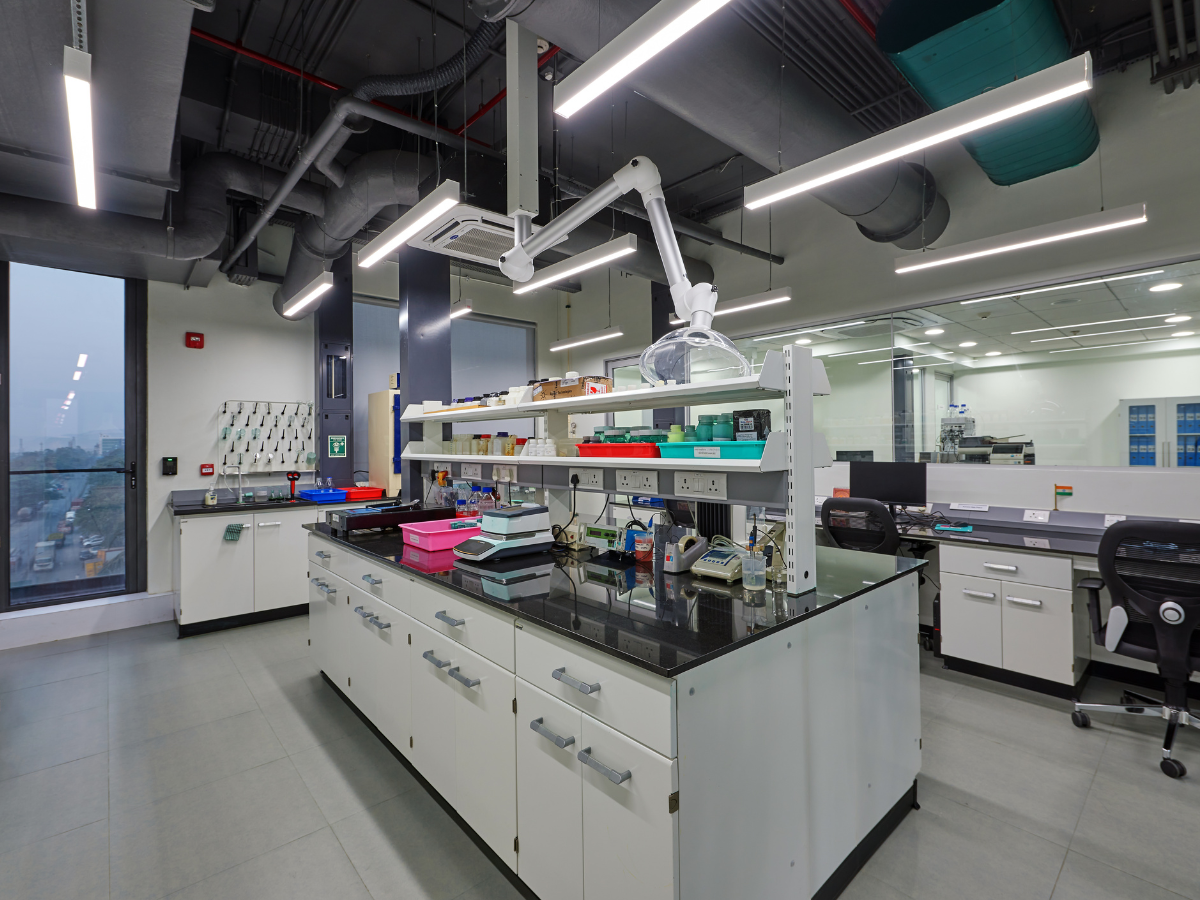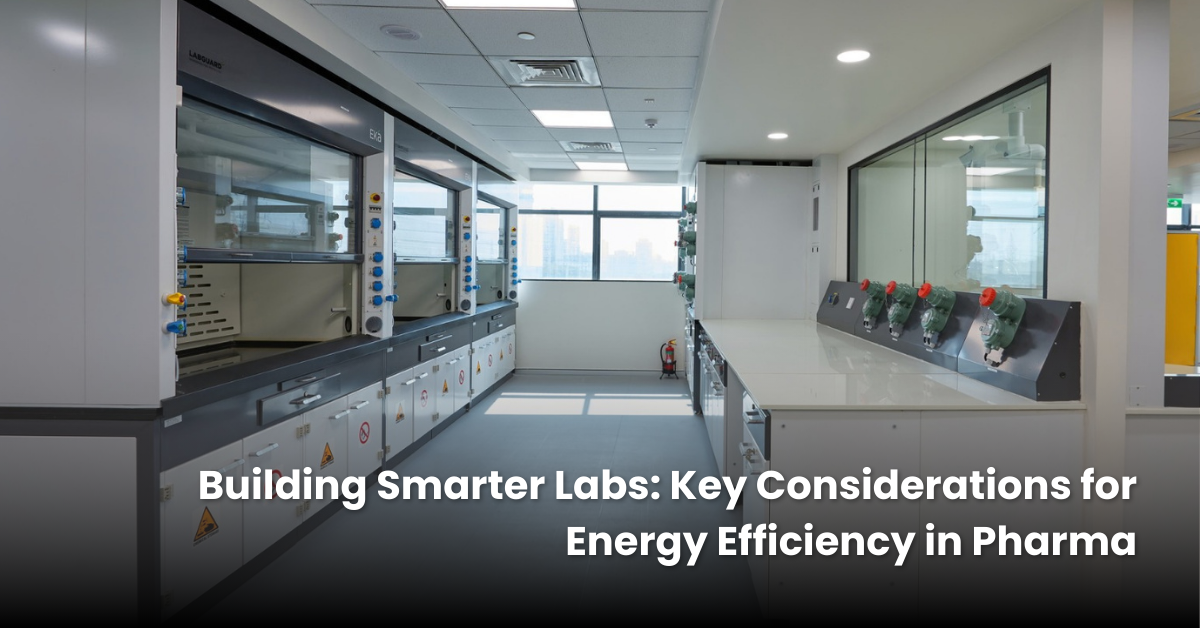In the pharmaceutical industry, lab construction requires careful attention to both operational efficiency and sustainability. With rising energy costs and increased environmental awareness, pharmaceutical companies are increasingly prioritizing energy-efficient lab construction. This not only reduces long-term operational costs but also supports sustainability goals and regulatory compliance. Here’s a guide to the key considerations for building energy-efficient labs in the pharmaceutical sector.
1. Energy-Efficient HVAC Systems
A significant portion of a lab’s energy consumption comes from its HVAC system. Optimizing HVAC systems for energy efficiency can dramatically reduce energy use:
- Variable Air Volume (VAV) Systems: These systems adjust airflow based on lab demand, providing precise ventilation while reducing energy consumption.
- Energy Recovery Ventilators (ERVs): ERVs recover heat from exhaust air, reducing the load on heating and cooling systems.
- Demand-Controlled Ventilation (DCV): This system adjusts ventilation rates based on occupancy or air quality, ensuring energy isn’t wasted when the lab isn’t in full use.
2. High-Efficiency Lighting
Lighting accounts for a significant portion of energy usage in lab environments. To reduce costs and environmental impact:
- LED Lighting: Use energy-efficient LED fixtures that last longer and consume less power compared to traditional lighting systems.
- Motion Sensors: Incorporating motion sensors ensures lights are only on when needed, further reducing energy consumption.

3. Optimizing Lab Design for Energy Efficiency
Energy-efficient lab design involves integrating various strategies to reduce energy use while maintaining optimal functionality:
- Building Insulation: Proper insulation helps regulate temperature, minimizing the energy required for heating or cooling.
- Daylight Harvesting: Maximize natural light by designing labs with windows and skylights, reducing reliance on artificial lighting.
- Efficient Workflows: Grouping lab activities with similar energy needs can minimize the use of systems like HVAC and lighting, reducing overall energy consumption.
4. Sustainable Materials and Practices
Using sustainable materials and incorporating eco-friendly construction practices can further reduce the environmental impact of lab buildings:
- Low-VOC Materials: Use paints, coatings, and adhesives with low volatile organic compounds (VOCs) to improve indoor air quality and reduce environmental pollutants.
- Recyclable Materials: Choose materials that are recyclable or made from recycled content to minimize waste.
5. Energy Monitoring and Control Systems
To track and optimize energy usage, pharmaceutical companies should implement energy monitoring systems:
- Smart Metering: Install smart meters to monitor energy consumption in real time and identify areas where energy savings are possible.
- Building Management Systems (BMS): A BMS can help control lighting, HVAC, and other systems to ensure they operate efficiently and reduce waste.
6. Renewable Energy Integration
Incorporating renewable energy sources, such as solar panels or wind turbines, can significantly lower a lab’s carbon footprint. Although initial installation may be costly, these systems can provide long-term savings and demonstrate a commitment to sustainability.
7. Water Efficiency
Energy efficiency isn’t limited to electricity usage—water conservation also plays a role in overall sustainability:
- Water-Efficient Fixtures: Install low-flow faucets, toilets, and other water-saving fixtures to reduce water consumption.
- Rainwater Harvesting: Consider collecting rainwater for use in non-potable applications such as landscape irrigation or cooling towers.
Conclusion
ScienceByDesign (SbyD) is committed to helping pharmaceutical companies build energy-efficient, sustainable labs that reduce operational costs and meet environmental goals. By integrating high-efficiency HVAC systems, LED lighting, sustainable materials, and advanced energy monitoring, SbyD ensures your lab construction project is both cost-effective and eco-friendly. Our team offers expertise in green building practices to help you achieve long-term energy savings without compromising safety, performance, or compliance.

